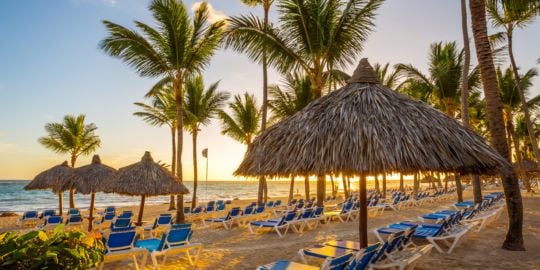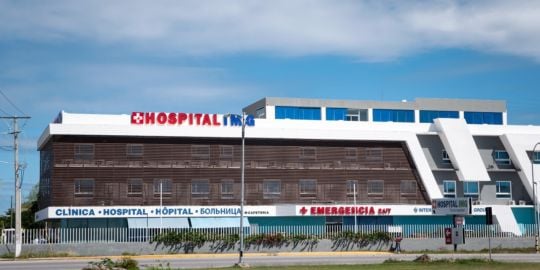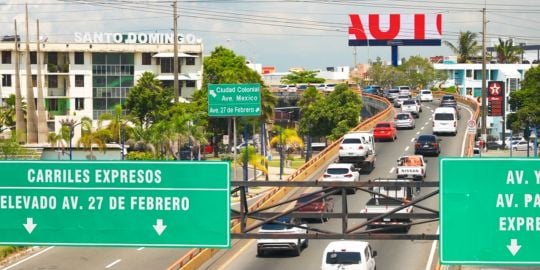Hi there! I was wondering how prepared Las Terrenas is for earthquakes/tsunamis? Are the buildings ‘earthquake proof' in so far as they can be? Is there a tsunami warning system in place? Do they cover what to do in the event of an earthquake/tsunami in schools? Are the teachers trained to know what to do? Do you ever think about the possibility of this or is it something that doesn't really cross your mind much? I have never lived in an earthquake zone and the thought of it quite scares me! Any info would be appreciated!
Earthquakes/tsunami
The sad thing is that the country as a whole is not prepared for a significant earthquake.
Building codes were updated after the 2010 Haiti earthquake which occurred on a fault, the Enriquillo Fault, which runs into DR to the area near Azua which is about 80kms west of the capital.
Las Terrenas is in a high risk area. The last major earthquake to hit DR was in 1946 and was an 8.1 including a 7.6 aftershock and was centred in the Samana area. It caused a tsunami which apparently killed thousands in the low lying Nagua area.
The answer to your question is that there is nothing of substance in place and with lax building control regulations many buildings will suffer significant damage if such a quake hit the area again, and a tsunami could be devastating in low lying areas.
Should you worry? I guess yes, but in a country with some 1500 earthquakes over Richter 2.5 annually that comes with the terrain, but the major ones are few and far between (there was a 6.4 in 2003 in Puerto Plata). And at least most buildings in Las Terrenas are low rise. Las Terrenas, like most of the north of the island, sits between the upthrust Caribbean/North American tectonic plate off shore and the historically active Septentrional sideways slipping fault which runs from Monte Cristi in the west through to Samana Bay along the south side of the northern mountain range.
Some of the best locations on this planet are at risk of such significant seismic activity. Most Caribbean islands are, and many of the most beautiful Pacific islands too.
Even a magnitude 5 earthquake can make one nervous so it is hard to imagine an magnitude 8 which would be 10 x 10 x 10 worse, yes a thousand time more energy.
Thanks so much for this very detailed response! Sounds super scary 😳
Also thanks for the detailed response from lennoxnev.
I don´t recall there being much damage on the DR side of the island in the 2010 earthquake with exception of a few 50+ year old buildings which showed some damage.
Considering it was relatively close to DR, greater impacts would have been thought likely on the assumption it was an event on the lateral slip/slide Enriquillo Garden fault which runs into DR to near Azua from Haiti. But there was no evidence of the lateral movements on this fault line and further investigation found that it occurred on a much smaller fault (Leogane) just west of Port au Prince. This probably accounted for the lesser impact on DR where there was strong shaking in the western province of Independencia in the Jimani area with moderate shaking extending in about 50 miles from the border. These are sparsely populated areas and I believe there were 15 deaths attributed to the event in DR.
I was out of the country at the time but many report decent shaking well inland in DR and in the capital, rather like a stiff 4 to 5 earthquake. I recall an early morning 5.2 a year or so later which was due to movement at the eastern end of the Enriquillo Garden fault near Azua, and a grinding presumably ground moving noise in the quietness of the night was what struck me as weird.
It all goes to show that even the smaller faults can cause major damage when we all tend to focus on the known historical problematic faults. The 2003 Puerto Plata earthquake was due to movement in one of the several small fault lines that populate that area and recently there was a decent shake in the Imbert area accredited to one of these faults.
But don't let the fear of an earthquake put you off DR. The probability of experiencing such a major event as Haiti 2010 in ones lifetime is very low compared to being involved in a serious car accident. It certainly isn't putting me off from starting to build a single level concrete and block 3 bedroom property in the middle of the country this week. But I have been clear specifying robust seismic details and good workmanship with my maestro.
Thanks for the excellent assessment and descriptions, Lenoxnev.
Things move slowly on the island!
By signing up to the exercise & inviting friends, you will help yourself & others
https://www.tsunamizone.org/
Hi
Any idea which part is less exposed to earthquake and tsunami? Is it the north cost ?
But in the previous info the hall country is exposed ?
Here is a good reference to see the earthquakes that occur every day in DR, the USAD website which keeps updating:
https://sismologico.uasd.edu.do/
Most of the quakes are 3.5 and less and you barely can feel these. There has been quite a lot of minor activity along the length of the main sideways fault which runs from North West Haiti through Santaigo and SFM to the Samana Bay area and beyond for the past few months and similarly around the South East of the island by Isla Saona where there was a 5.3 a month or so back.
All of DR is susceptible to earthquakes and of course low lying coastal areas will be at risk of tsunami if there ever is a one above Richter 7.00.
Thks
What you mean by low lying area?
I tried to post a link here but as you can see in my previous post, it is under review!
Anyway google tsunami zone Caribbean. The drill for the region is March 15, Thursday.
A swarm of smaller earthquakes have been occuring north and around Tenares and towards Gasper Hernandes and likely associated the Septentrional fault.
https://sismologico.uasd.edu.do/
Probably too small to be felt.
The Cabrera area is the latest part of the north of the island to be experiencing a cluster of earthquakes with a 4.5 earlier today:
https://sismologico.uasd.edu.do/
The site updates automatically but right now showing the several earthquakes in that area.
It makes me wonder if there is a stress build up along the slip slide major faultline in the northern part of DR, the Septentrional fault, which has seen clusters along or near it's length periodically over the past year, and these cluster are providing relief.
Sorry to remind people but we are getting close being due a big one.....73 years ago and historically they have come along about every 80 to 100 years.
Hope all of you safe and sound
What about las Terrence any hurricane or earthquake?









